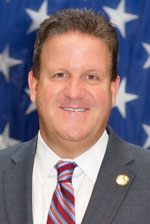The Hamilton County Commissioners adopted the Hamilton County Plan Commission’s updated Comprehensive Plan on April 12. The long-range document provides a foundation for all land use, transportation, and environmental policies for the rural townships of Wayne, White River, the northeast corner of Noblesville, and Adams Township.

Meyer
“Through public input, a real vision emerged for this area,” said Corrie Meyer, President and CEO of Innovative Planning, the consultant team that led the Plan Commission through the process. “We’re confident the final product is not only strategic and thoughtful; but also provides guidance for landowners and developers regarding what county leaders and residents want to see, and how to grow, build, and invest in the county.”
The recommendations of the new Comprehensive Plan focused on:
(1) Endorsing the agrarian culture and quality of life,
(2) Balancing current land uses and growth in a sustainable manner,
(3) Protecting floodplains and natural resources,
(4) Strategically encouraging economic development in business and agriculture, and
(5) Managing population growth by increasing clusters of population density.

Heirbrandt
“They’ve provided us with a detailed roadmap for the next 10 years,” said Mark Heirbrandt, president of the Hamilton County Commissioners. “The Plan Commission’s due diligence will help county leaders implement what county residents envision and aid in future decision making based on factual data. Plus, it offers the added benefit of protecting property values.”
The last Hamilton County Comprehensive Plan was adopted in 2006, and prior to that, 1990. The latest revision of this planning effort is deeply rooted in citizen input, as the commission hosted nine community meetings (three in each township) and six public presentations. More than 600 residents also responded to mailed and online surveys – even during the height of the pandemic.
“The Comprehensive Plan recommendations are just that – recommendations,” added Meyer. “These recommendations are not code and they are not policies that have already been adopted. They are strategic inspirations intended to be implemented over the next 10 years through zoning ordinances and future county-wide policy statements.”
The Commission’s categorized recommendations are attached. The public can view the entire 100-page document at this link.
